Ways to Homestead Without Land (Skills You Need Now!)
Homesteading is a term that has picked up popularity in the last several years. The idea of growing your own food, raising livestock, and cultivating a life of self-sufficiency has intrigued many. Maybe your desire to homestead comes from seeing parts of the commercial food industry that you’re not comfortable with. Maybe you just desire a simpler way of life – full of hard work and spending more time with your family.
Whatever the reason, I’m glad you’re here. And I hope I can show you that there are so many ways to move towards this lifestyle regardless of how much land you have.
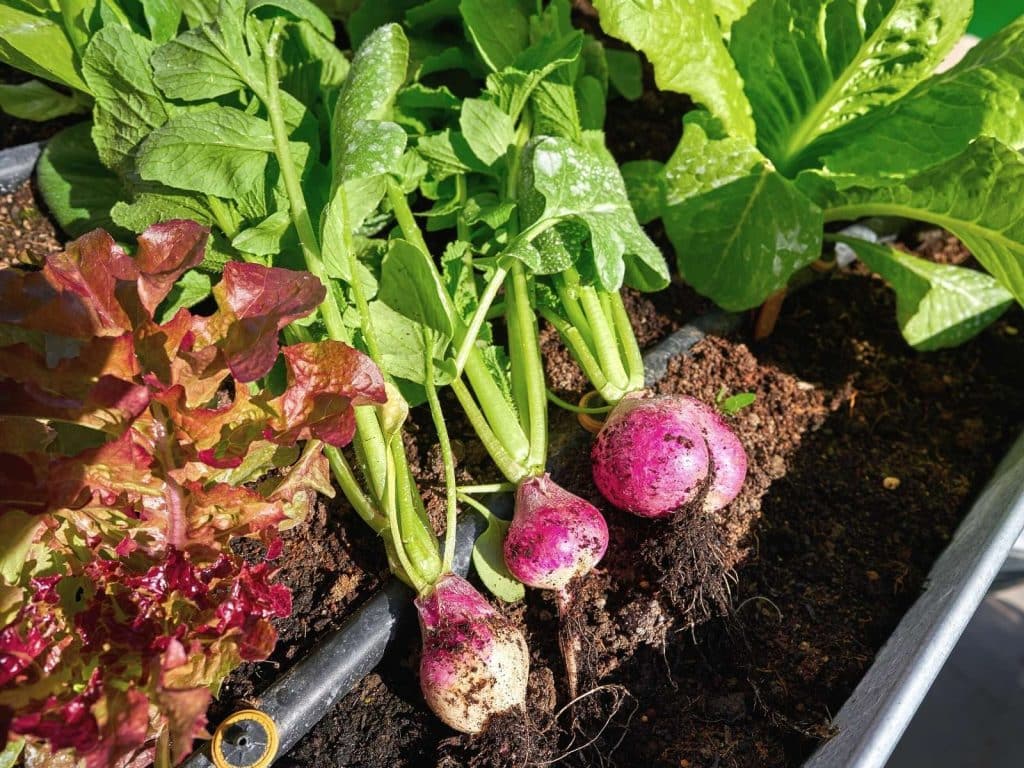
What is Homesteading?
Homesteading is a phrase that gets thrown around a lot – but what exactly is it? It is typically described as living a life of self-sufficiency. Especially in areas of growing food and raising livestock. But that doesn’t give the full picture…
There are skills you need to know beyond gardening and animal care. And to be completely honest, a life of full self-sufficiency is almost impossible to achieve. You will still at some level rely on outside sources. The good news is that you can take control of what those outside sources are and limit them.
That’s why I prefer to think of the homesteading lifestyle more along the line of acquiring skills and building relationships in order to reduce your dependence on commercial agriculture and government systems. That’s good news because so many of us can cultivate skills and relationships regardless of where we currently live!
Affiliate disclosure: This post may contain affiliate links. As an Amazon Associate this means I will earn a small commission if you choose to purchase through my links. This is at no extra cost to you!
How to Homestead without Land
Click the links to read about each in more detail and find resources.
- Homesteading in the Kitchen
- Gardening and Raising Animals Without Land
- Running a Homestead Household
- Resources
Homesteading in the Kitchen
Eating in Season Produce
If you’re a frugal grocery shopper, you may already be doing this for money saving purposes. But for most of us, we don’t really know what’s in season and what’s not. Here in the United States, we have fruits and vegetables brought in from all over the world. That means that we have strawberries and kale available year-round.
But when you start growing your own food, that’s not always the case. And depending on your particular climate, you may have seasons where fresh produce is extremely limited in your garden. If you don’t want to be dependent on the grocery store for all of your produce, you’ll need to adjust your cooking styles to reflect seasonal harvests.
For example – I’m down in South Texas. We have a very long and hot growing season. I know in Spring, Summer and Fall I can grow just about any warm weather crop (tomatoes, squash, okra, beans, etc.). But cool weather crops like broccoli, cabbage, carrots are much harder for me to grow because our cool weather window is very short.
Try talking with some local homesteaders to see what types of produce they are getting during certain times of the year.
Cook from Scratch
This is the easiest way to start cultivating basic homesteading skills in your own home. You have to cook and provide family for your food already, so why not? Start looking at ways you can replace store bought items with good quality homemade items. Stop buying packaged seasoning blends, baked goods, and side dishes. Instead, buy basic ingredients and learn how to turn them in to something tasty (flour, oats, rice, etc.). Start small and only tackle one area at a time so you don’t overwhelm yourself. Once you’ve got a good grip on that skill – move to the next.
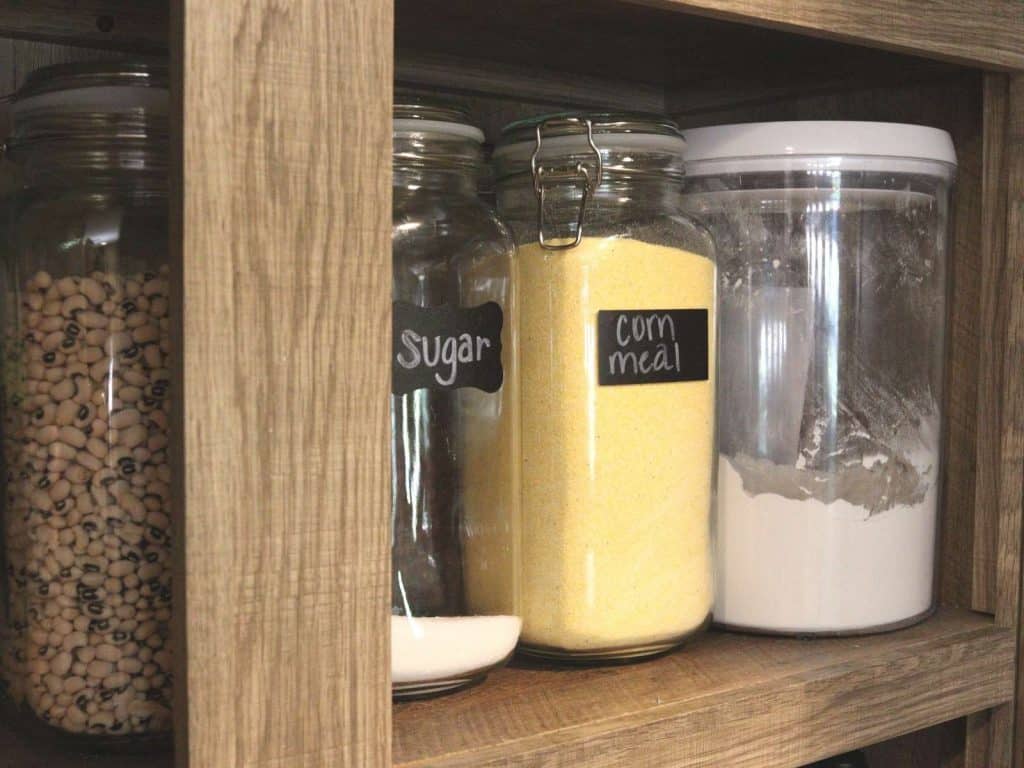
Here’s a couple ideas to get started:
Bread Making
I started with bread products in our house. I just wanted to be able to replace our store-bought bread, but that grew in to me replacing almost all of our bread products and baked goods. Start trying to replace some of your baked goods with homemade versions using whole food ingredients. Think about bread, rolls, buns, muffins, pizza dough.
Despite most recipes now days showing that you need a big expensive stand mixer or bread machine to make bread – you really don’t. I own neither of these but make our baked goods from scratch. Just get ready to build your arm strength up with all that kneading ?
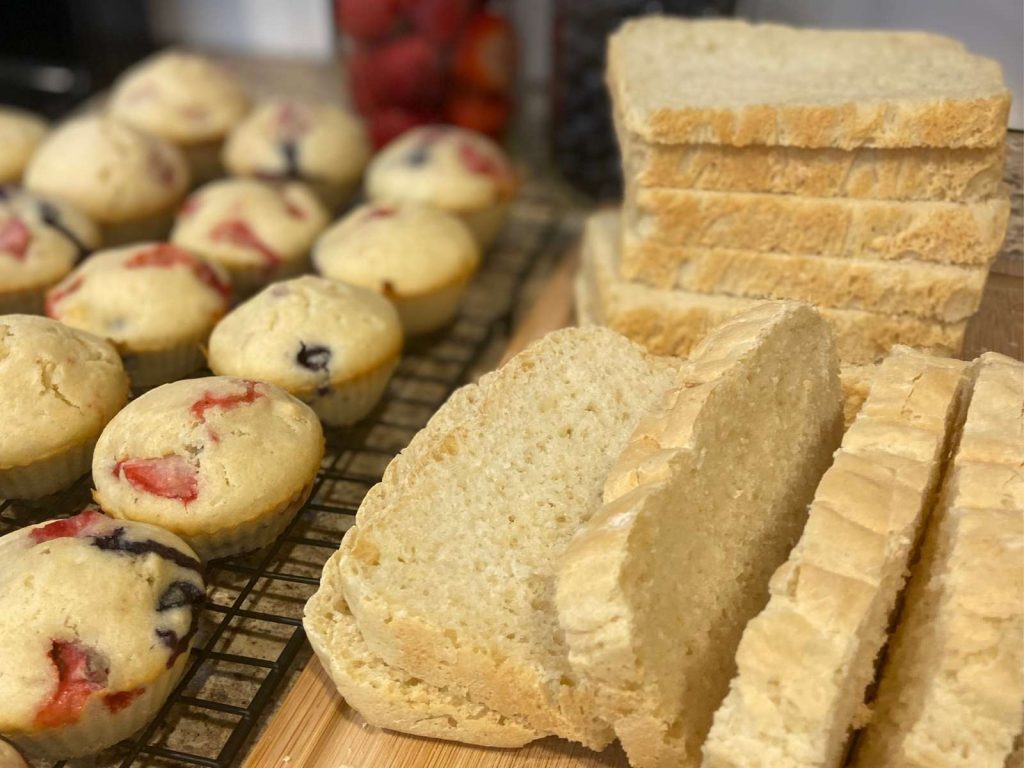
Homemade Dairy Products
Learning how to use milk to make your dairy products is another practical way you can work towards self-sufficiency without land. But where do you get the milk?
Depending on your state, you may be able to find local farmers who can sell you fresh milk. If not, you can purchase milk and heavy cream from your grocery store to learn with.
Start making things like soft cheese, sour cream, butter, and yogurt.
Food Preservation
This skill is crucial to start working on early on if you are serious about homesteading. Don’t wait until you’re growing a lot of food yourself to figure out how to preserve it. You can start learning now by grabbing garden fresh veggies at the farmer’s market, or even in season organic grocery store produce.
There are various ways to preserve food. Pressure canning, dehydrating, and fermenting are just a few. Some foods do better in a specific method than others. Some also require far less equipment and space. Start learning how to preserve certain foods and stocking up on the different supplies you may need.
Jump to the bottom of the post for a list of resources.
How to Produce Food Without a Lot of Land:
Container Gardening or Raised Beds
Friends do not underestimate the amount of food you can grow in small garden spaces! I’m talking really small spaces. You absolutely do not need acres and acres of land in order to grow food. The first time I grew 15 pounds of potatoes in a small 8 square foot space I was shocked.
A few 4’X8’ beds with trellises to allow plants to climb can produce a lot of food. That’s less than 100 square feet of dedicated garden space.

What about setting up containers on your patios? Almost every type of vegetable can be grown in a container, and most even have specific varieties that are labeled as container friendly. Take advantage of your vertical space as well! Plants that grow on vines love to climb, which saves your precious square footage.
When working with limited planting space, be sure to allow the most space to those food items that you and your family eat a lot of. Next, sprinkle in some of the plants that you eat occasionally. Finally, sprinkle in things like fresh herbs or varieties you want to experiment with.
And don’t forget, your container garden or raised bed space doesn’t have to be Pinterest worthy and perfectly uniform. Search for containers and materials that can be repurposed to keep the cost down.
Start Seedlings
Maybe you really don’t have enough space to set up raised beds or containers – but you still want to learn about gardening. A great way to experiment with this is to start seeds! Learning about starting plants from seeds is a good idea and may actually prove to be a little more difficult than you initially think. This saves so much money when planting a garden, so being able to do this well is an excellent skill to have. Even if you live in a really small home, you can do this. All you need is a window that gets adequate sunlight for your seeds to germinate.
The great thing about this is that once you get the seedlings going, you can go to your local farmers markets and start selling them! You’ll be able to make some cash and meet local farmers/homesteaders and learn a ton of valuable information from them.
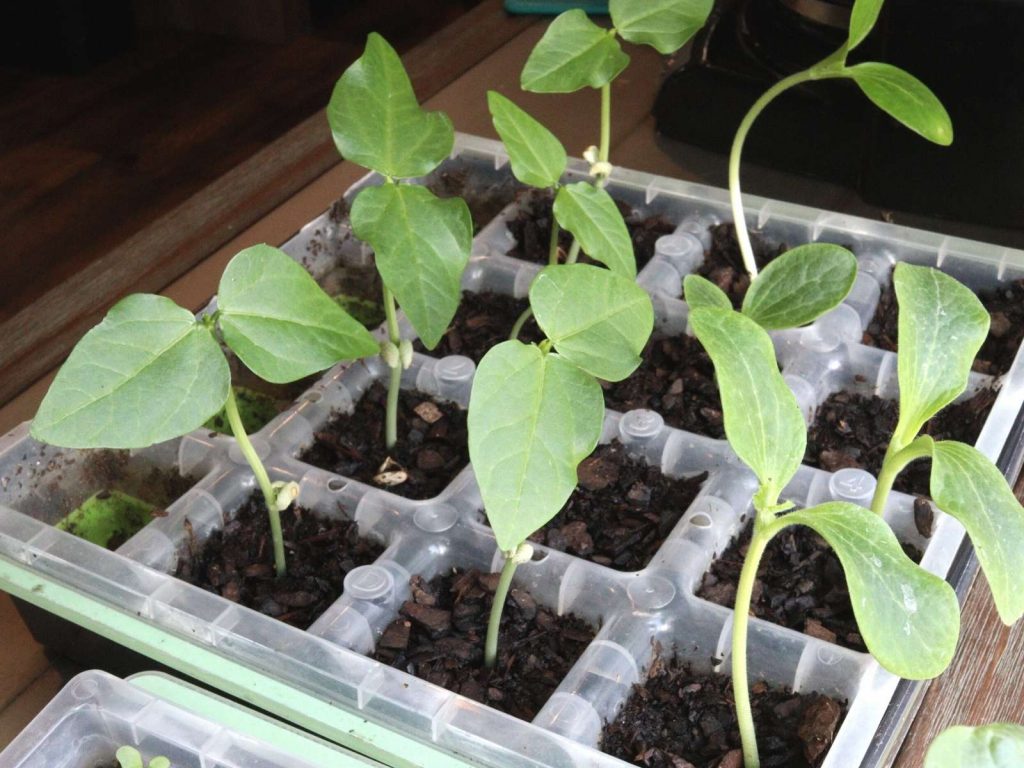
Forage for Food
This one is going to require a little knowledge about the edible plants and fruits that grow in your area, as well as some land you’re able to explore. But once you know what is safe, this is an excellent way to roll up your sleeves and really feel self-sufficient!
In our area, we can find wild berries growing all over in the Spring. We grab our buckets and set out to fill them with fresh mulberries and dewberries. With those fresh (and free) berries we are able to make enough homemade jelly for our family for an entire year.
Check and see if a family member or friend have fruit trees that you can come pick. A lot of times, people have trees loaded down with more fruit than they need and will be glad to have it go to good use.
Community Garden
This one is going to require a little more organizing and reaching out, but you would be surprised at the number of local governments that would approve a community garden! You could potentially even reach out to individual land owners that you know to see about borrowing a section of their land to plant. Just be aware that when using someone else land, you are going to be responsible for tending it properly. So make sure you’re up for the responsibility of a community garden.
Start an Herb Garden
Growing fresh herbs for homemade seasonings and medicinal purposes is another way to garden without a lot of space. You can grow small containers of various herbs on your patio or in your windowsill.
Raising Animals
Even though your space may be limited right now, there are still some animals that can be raised in a backyard or even on a balcony. You will need to check on restrictions for raising animals that are not pets in your particular area. Rural areas will probably have less restrictions on these things but reach out to your local government offices if you are unsure.
Quail are an excellent option for those with limited space. They can be raised for both meat and eggs. Some people choose to raise them on balconies or in their garage in stacking cage systems.
(We raise a lot of our own quail – check out this post for more details Supplies to Raise Your Own Quail – Beginners Guide)
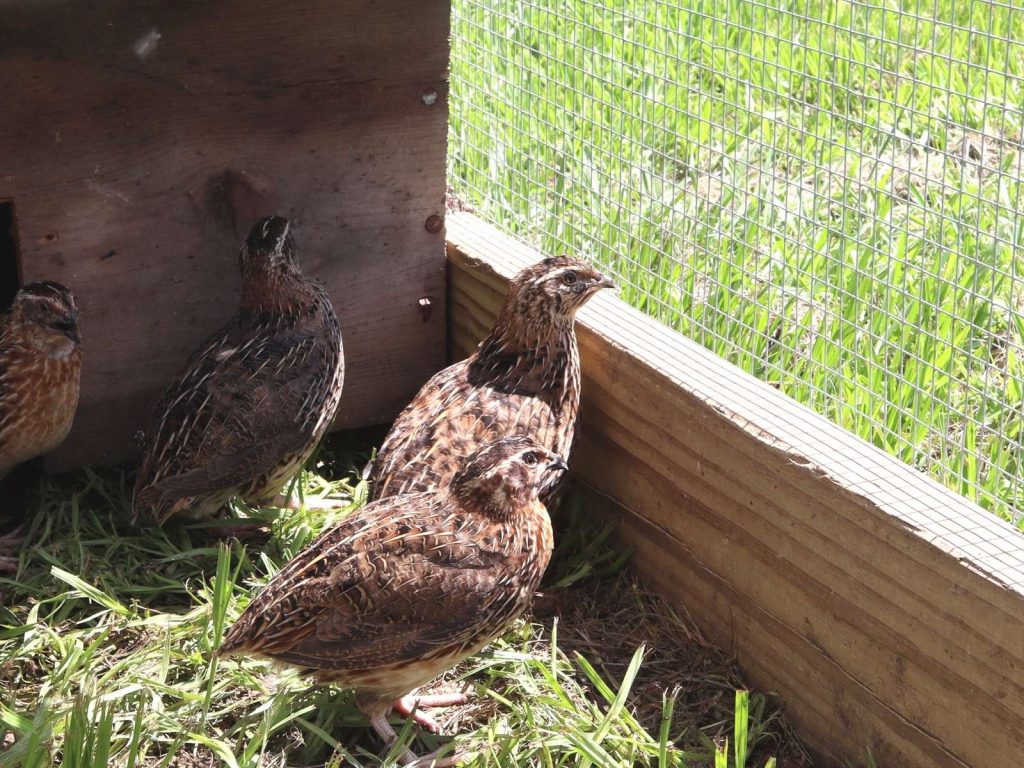
Chickens are great if you have a small piece of your own land. Just a few hens are enough to provide your family with farm-fresh eggs. You’ll need space for a chicken coop and a run.
Meat rabbits are another small animal that can provide your family with home-raised protein. They are quiet animals and most people who raise them for meat use a cage system.
If you would like to produce your own dairy, but don’t have space for a cow, check out some breeds of dairy goats. Of course, you’re going to need some land – but not necessarily a 5-acre pasture. Things to keep in mind for dairy goats is that they will need good fencing and a shelter. Goats are herd animals, so you will need at least two.
Read more on The Best Animals for a Small Homestead or Farm.
Offer to Help a Farmer
Remember earlier when I mentioned seed starting and connecting with people at the local farmer’s market? Ask them about helping out on their small farms or homestead. This way of life is a lot of work. If you hear someone talking about needing some help around their homestead, offer to help! This is a great way to get some hands-on knowledge and build a good relationship with local homesteaders.
Running a Homestead Household
Household Management
This one may seem a little out of place, but I promise it’s not. If you are hoping to one day be a self-sufficient homesteader – you need a household that runs smoothly (at least some of the time). This means routines and expectations need to be cultivated and defined.
Homesteading is often described as a simple life. And while it is full of back to basic skills, it isn’t easy work. It requires a lot of time and effort to keep all the wheels turning. If you are trying to grow a garden, homeschool your kids, milk a goat, and bake fresh bread without any systems or routines in place, your days will soon start to feel like drudgery instead of joy filled.
So start working on developing routines in your daily life (and the lives of your children) that allow for less chaos.
Natural Remedies
Growing medicinal herbs for homemade remedies is something that can be done in small spaces. You can then use those homegrown herbs to make homemade natural remedies for everyday illnesses. Learn about various herbal tea blends that are good for you. There are loads of resources online or books from certified herbalists.

Learn to Sew
Learning to sew basic things is a great option for a skill to develop without land. Knowing how to patch and mend your existing clothes is a big money saver. A sewing machine can make things easier, especially if you’re wanting to make your own clothes. But you can also learn several mending techniques with just a thread and needle. I especially like that this skill is one you can work on during the winter months when the gardening season is much slower.
Cleaning products
Start exploring ways to replace your chemical filled cleaning products with safe and natural products that you can mix up at home. Personally, I use white vinegar and water, scented with a little essential oil, for almost all of my household cleaning these days.
Natural Skincare
Explore ways to swap out your chemical filled skincare products for more natural ones. Learn how to make goats milk soap or moisturizers using all natural ingredients.
Book Resources
- Square Foot Gardener – Grow Vegetables Anywhere!
- First Time Gardener
- Ball Guide to Home Food Preserving
- Mini Farming – Self Sufficiency on 1/4 Acre
- The Homesteaders Herbal Companion